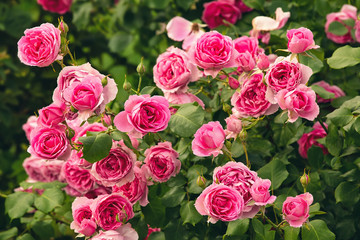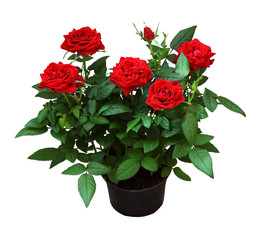



"Explore Trees, Discover Nature. " -Fr.Principal


Roses are erect, climbing, or trailing shrubs, the stems of which are usually copiously armed with prickles of various shapes and sizes, commonly called thorns. The leaves are alternate and pinnately compound (i.e., feather-formed), usually with oval leaflets that are sharply toothed. The flowers of wild roses usually have five petals, whereas the flowers of cultivated roses are often double (i.e., with multiple sets of petals). Rose flowers’ size ranges from tiny miniatures 1.25 cm (0.5 inch) in diameter to hybrid flowers measuring more than 17.5 cm (7 inches) across. The rose plant’s fleshy, sometimes edible, berrylike “fruit” (actually the floral cup) is known as a hip and usually ranges from red to orange in colour.
1. Roses are widely cultivated for their aesthetic appeal and are commonly used in gardens, landscaping, and floral arrangements.
2. Rose petals are used in the production of essential oils and perfumes. The distinct and pleasant fragrance of roses makes them a popular choice in the fragrance industry.
3. Roses have been traditionally used in herbal medicine for their potential health benefits. Rosehip, the fruit of the rose, is rich in vitamin C and is used in teas, jams, and supplements.
4. Rose extracts and rose water are often used in skincare products. They are believed to have soothing and anti-inflammatory properties, making them beneficial for the skin.
5. Growing and caring for roses can be a therapeutic and rewarding hobby. Gardening enthusiasts often find joy in cultivating and nurturing rose plants.